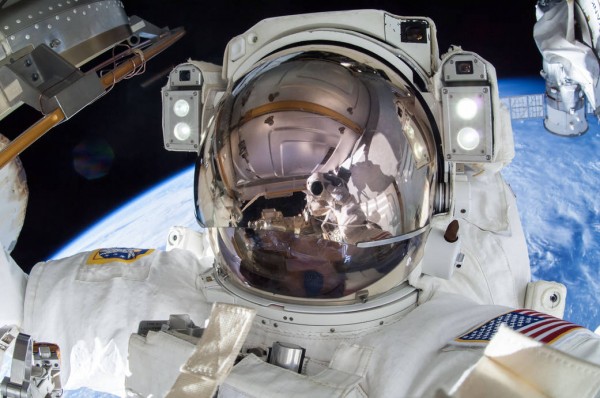By Ana Verayo, | November 03, 2016

U.S. astronaut Terry Virts tweeted his followers this image after completing a series of spacewalks at the International Space Station. (NASA)
Ever wonder what it's like inside the International Space Station from an astronaut's perspective? Now, NASA provides this incredible view in stunning ultra high definition 4K video of the orbiting space lab to allow members of the public experience microgravity and what goes on during a day in the life of an astronaut.
Like Us on Facebook
This new NASA video was uploaded last week, showing the space station via a "fisheye fly through" using NASA's Ultra HD 4K technology. The video was captured in ultra high-definition or 4K video resolution using a fisheye lens to add a seeming microgravity effect within the space station's depth of field.
Viewers are transported to lower Earth orbit, making you feel like you are floating inside the ISS and exploring the cabins and scientific equipment of the crew.
There is also a fantastic view of Earth from the space station courtesy of NASA TV. The channel regularly releases incredible footage of the space laboratory and more information about the space agency's ongoing space programs.
The tour starts from the control area of the robotic arm of the ISS, revealing the Earth in a magnificent panoramic view of this windowed module known as the Cupola. Outside this module are the solar arrays including the Cygnus spacecraft and Soyuz crew capsule, which are both docked.
The video continues to show the Unity module which is the first part of the station ever installed in 1998 and then the tour reveals the Russian Rassvet module that was built in 2010, also showing a peek inside the Soyuz crew capsule.
The ISS tour also shows the Destiny laboratory that holds life support systems and research that was made in 2001. The Harmony module was also revealed in the video, showing where the astronauts sleep.
The largest part of the ISS is the Kibo laboratory that was constructed in 2008, where an external airlock was also presented. After this, the Columbus science laboratory of the European Space Agency was also shown. It holds the Biolab where plant and micro organism experiments take place.
The last part of the tour was the Quest airlock that connects the Unity module and finally, the Tranquility module which was attached in 2010.
-
Use of Coronavirus Pandemic Drones Raises Privacy Concerns: Drones Spread Fear, Local Officials Say

-
Coronavirus Hampers The Delivery Of Lockheed Martin F-35 Stealth Fighters For 2020

-
Instagram Speeds Up Plans to Add Account Memorialization Feature Due to COVID-19 Deaths

-
NASA: Perseverance Plans to Bring 'Mars Rock' to Earth in 2031

-
600 Dead And 3,000 In The Hospital as Iranians Believed Drinking High-Concentrations of Alcohol Can Cure The Coronavirus

-
600 Dead And 3,000 In The Hospital as Iranians Believed Drinking High-Concentrations of Alcohol Can Cure The Coronavirus

-
COVID-19: Doctors, Nurses Use Virtual Reality to Learn New Skills in Treating Coronavirus Patients







